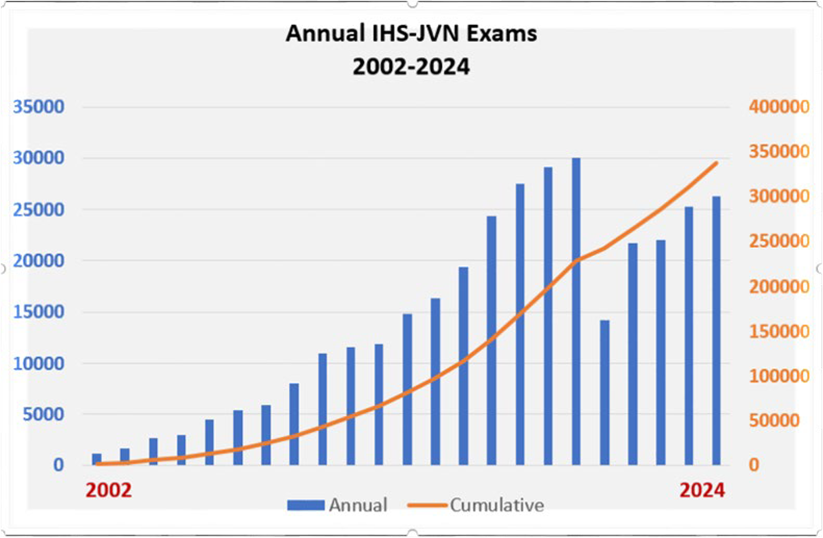IHS-Joslin Vision Network Teleophthalmology Program


National program established in the year 2000 to address Diabetic Retinopathy -
the leading cause of blindness in American Indian and Alaska Native adults.
the leading cause of blindness in American Indian and Alaska Native adults.
Focuses on patients with diabetes who have not had an annual eye examination.

Less than half of people with diabetes have an annual eye exam, increasing susceptibility to blindness from diabetes.
The standard of care is an annual diabetic retinopathy exam with IHS-JVN imaging or in an Eye Clinic.

JVN Increases Access to Eye Care
Patients obtain a retinal screening exam during primary care appointments or on a walk-in basis.
24% of Patients Imaged are diagnosed with Diabetic Retinopathy
Many patients with diabetic eye disease have no visual complaints.
Diabetic Retinopathy Surveillance in 25 States and Growing
104 Fixed/Hybrid Sites
20 Portable/Mobile Sites


How It Works
As a Category 3 telemedicine program, IHS-JVN remotely identifies the presence and level of diabetic retinopathy, recommending referrals and follow-up. Specialized computer software transmits images to the IHS-JVN National Reading Center. IHS doctors, trained by the Joslin Diabetes Center, interpret the images and generate a report for clinics and providers. Non-diabetic eye disease is also identified and reported.

Indian Health Service
April - 2025
April - 2025


